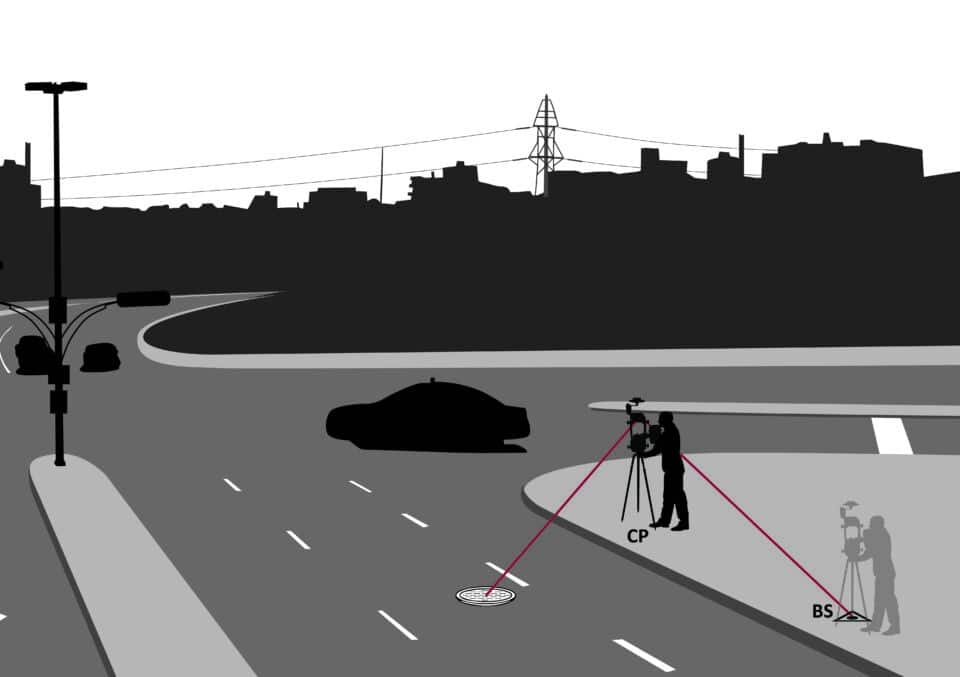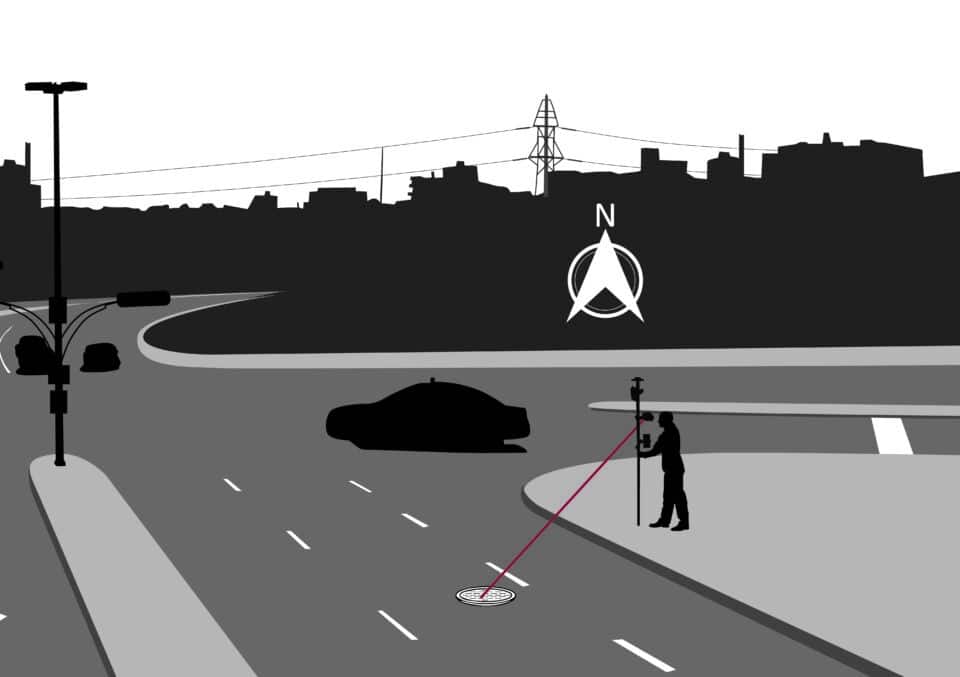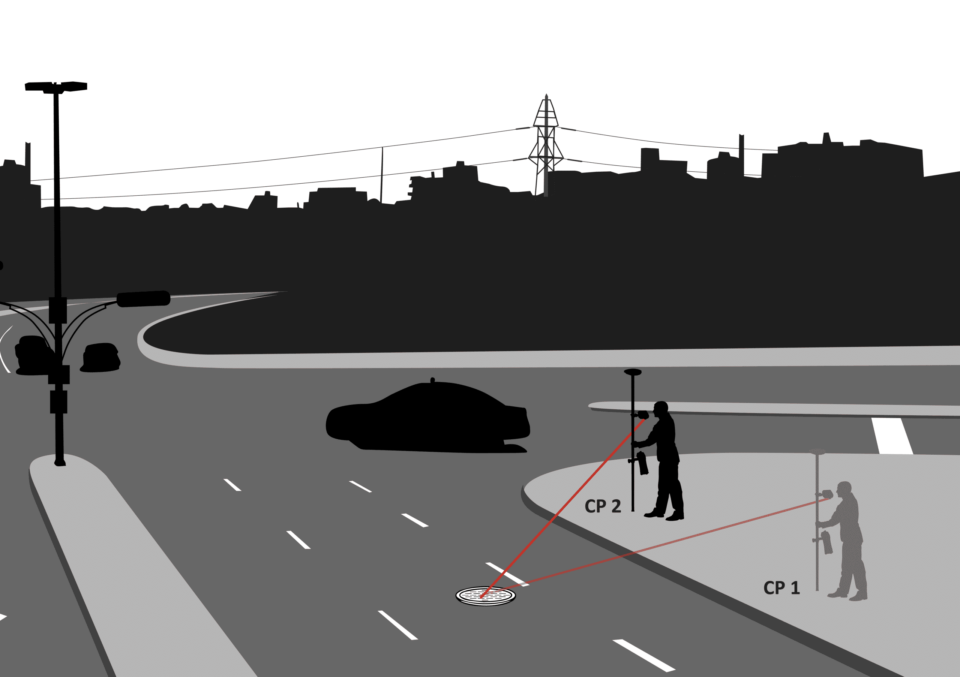- TruPulse 200, 200B, 200X: measures Distance and Tilt
- TruPulse 360, 360B, 360R: measures Distance, Tilt and Azimuth
- TruPulse with TruAngle: measures Distance, Tilt and Angle
Assessing TruPulse Accuracies

Range-Angle TruPulse Mapping Method measures distance, tilt, and angle to the target
To do this, we first determined the expected or “typical” accuracy of the laser rangefinder when measuring to ordinary objects at normal distances. As expected, we found this to be better than our published accuracy, which we like to be conservative with to cover the weaker, less common targets. We used the published specs for the Tilt, Azimuth and Angle sensors as they represent typical accuracies already.
Next, we did the math to come up with accuracy estimates for the three most used mapping methods. We used two reference distances, one at 50 meters and the other at 100. Our customer said most of the time they did not shoot past 50 meters and we told them that for some of the methods, they would achieve even better results at closer ranges. When it makes sense, they occasionally need to measure 100 meters to position objects so they wanted to know what that ceiling was.

Range-Azimuth TruPulse Mapping Method measures distance, tilt, and azimuth to the target


